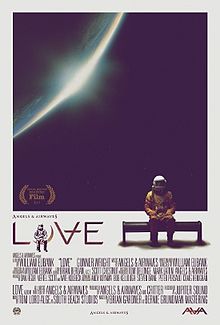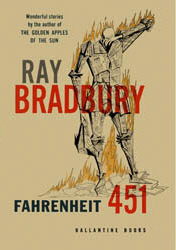I’ve been deep diving into movies about newspapers. There are more than a few. I think I may have found the best. Oddly, it’s one of the oldest. “Five Star Final,”released in 1931, is about the destruction caused by a do-anything-for-circulation tabloid. The competition was tight between that feature and “Deadline – USA,” another black and white picture, though this from 1952. Both include as leads men better known for playing gangsters and good guys during crime films of the noir era. Both portray troubling behavior in the newspaper business that could have happened yesterday.
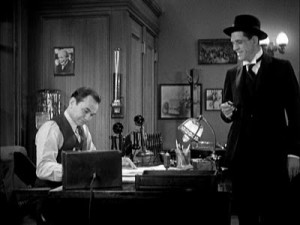 Edward G. Robinson is the managing editor in “Five Star Final,” while “Deadline – USA’s” top editor is Humphrey Bogart.
Edward G. Robinson is the managing editor in “Five Star Final,” while “Deadline – USA’s” top editor is Humphrey Bogart.
In bad journalistic tradition, I’ll bury the lead and talk about the second-place movie first. In “Deadline – USA,” Ed Hutcheson (Bogie), the editor of the The Day, goes after a mobster for a murder. The only hitch: He has three days until the newspaper will be sold by the family that owns it and closed by a competing publisher. (We call this the Gannett approach.) In a way, it is the more traditional of the two newspaper movies, with its crusading journalist chasing a bad guy. A few things make it better than most of the others I watched. Actual scenes are shot among the printing presses. Most movies cop out and use b-roll or even acquired footage of presses rolling. You’re going to do a newspaper movie, you’ve got to play some scenes in the pressroom.
This happens in “Deadline – USA,” including the death of one character, crushed when he falls into the spinning metal rollers and web of newsprint.
The movie features some good lines from the pressroom.
Bogie tells the gangster Tomas Rienze what’s going to happen from the phone with the presses rolling behind him:
“That’s the press, baby. The press! And there’s nothing you can do about it. Nothing!”
Or maybe I’m just obsessed with printing presses.
In spite of the crusade, The Day is done. The last shot is of Hutcheson reading his paper’s story on the murder as The Day’s neon sign dims and goes out. I can’t leave this film without quoting Hutcheson’s eerily prescient lines on what readers want from newspapers:
“It’s not enough any more to give ’em just news. They want comics, contests, puzzles. They want to know how to bake a cake, win friends and influence the future. Ergo, horoscopes, tips on the horses, interpretation of dreams so they can win on the numbers lottery. And, if they accidentally stumble on the first page… news!”
As dark and realistic as it feels, “Deadline – USA” has nothing on the older “Five Star Final” for portraying the destruction caused by a tabloid paper determined to get a story by any means. New York Evening Gazette managing editor Joseph Randall (Robinson) pursues a woman 20 years after she shot her unfaithful husband and served her time. She’s married, living in anonymity. It’s the day before the wedding of her daughter, who doesn’t know her mother’s past. A reporter poses as a minister to get the mother’s story. The mother, then her husband, commit suicide. Lives are destroyed. I will admit scenes come off as melodramatic in our era of more naturalistic storytelling. But the havoc wreaked by tabloids in search of circulation could, as they say, be ripped from today’s headlines.
The film is based on the stage play by Louis Weitzenkorn, who worked at one of the city’s nasty tabs of the time. That might explain the double-suicide histrionics. Yet the film is dark in a real way. No one at the newspaper, not even Robinson’s character, looks good in this story. Isopod, the reporter who masquerades as a minister to get the story, is played as a real journalistic monster by Boris Karloff, just weeks before the release of “Frankenstein.” How do you like them metaphorical apples?
If you’re into thundering newspaper presses, reporters screaming “get me rewrite” and the disturbing thrill of newspaper people behaving just as badly as they can today, check either film out. As all good oldies, they only run 90 minutes a piece.
I’ll finish with an interesting bit of trivia. “Five Star Final” was remade as “Two Against the World” just five years later. This time, Bogart had Robinson’s role and the setting was switched from a newspaper to a radio station. Storytellers were already considering the destructive power of tabloid journalism when put in the hands of the new broadcast medium. I’m going to have to watch that one.
 Agatha Christie is golden age, but is she cozy or bloody–hard boiled even? Okay, maybe not hard boiled, but according to a WSJ front page article, Christie staged “some of the world’s grimmest homicides” on paper that were then made bloodless for the screen. New TV productions commissioned by her estate bring back bloody Agatha.
Agatha Christie is golden age, but is she cozy or bloody–hard boiled even? Okay, maybe not hard boiled, but according to a WSJ front page article, Christie staged “some of the world’s grimmest homicides” on paper that were then made bloodless for the screen. New TV productions commissioned by her estate bring back bloody Agatha.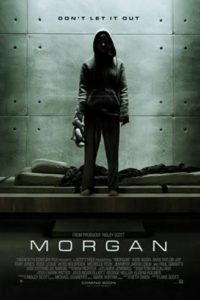
 Edward G. Robinson is the managing editor in
Edward G. Robinson is the managing editor in 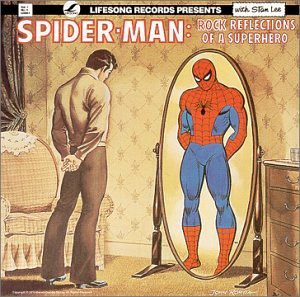 I flipped through one 40-year-old comic book the other day and was suddenly reminded of books I’d read and music I’d listened to way back then.
I flipped through one 40-year-old comic book the other day and was suddenly reminded of books I’d read and music I’d listened to way back then.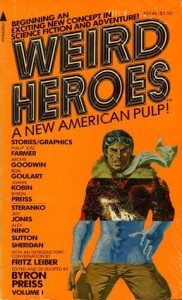 Below the ad for “Son of Origins” was one for “The Mighty Marvel Bicentennial Calendar,” with Spider-Man, The Hulk and Captain America trooping with drum, fife and flag. This I did not buy. Here’s what I missed out on: “A glorious, full-color, 12-month trek through American history with the Marvel superheroes. Join The Hulk at Valley Force. Conan the Barbarian at the Battle of Lexington…” You get the point.
Below the ad for “Son of Origins” was one for “The Mighty Marvel Bicentennial Calendar,” with Spider-Man, The Hulk and Captain America trooping with drum, fife and flag. This I did not buy. Here’s what I missed out on: “A glorious, full-color, 12-month trek through American history with the Marvel superheroes. Join The Hulk at Valley Force. Conan the Barbarian at the Battle of Lexington…” You get the point.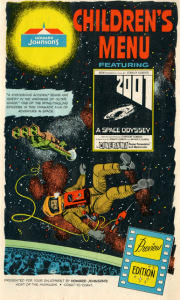 Collisions that happen in my mind: “2001: A Space Odyssey,” “Interstellar” and Howard Johnson. Okay, the first two are obvious for the way the first movie informed the second. (How many “2001” references did you count in “Interstellar”?)
Collisions that happen in my mind: “2001: A Space Odyssey,” “Interstellar” and Howard Johnson. Okay, the first two are obvious for the way the first movie informed the second. (How many “2001” references did you count in “Interstellar”?)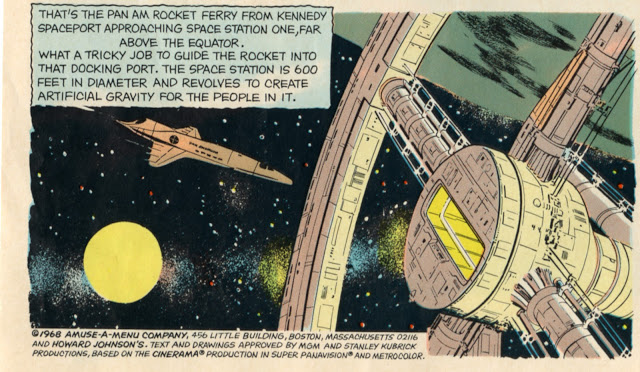
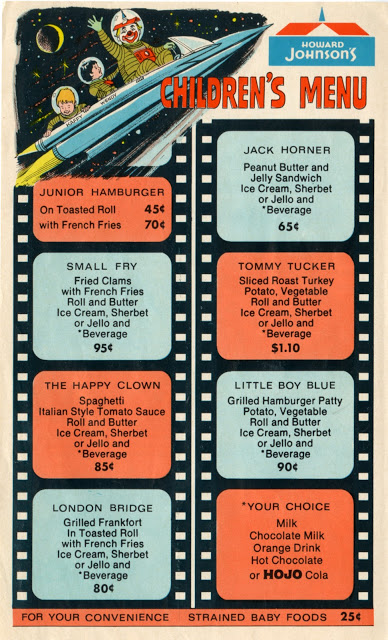
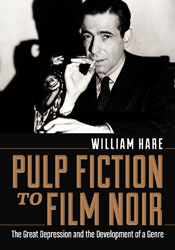 I first discovered McFarland & Co. Publishers many years ago when I bought the book Unsold Television Pilots 1955-1988 by
I first discovered McFarland & Co. Publishers many years ago when I bought the book Unsold Television Pilots 1955-1988 by 